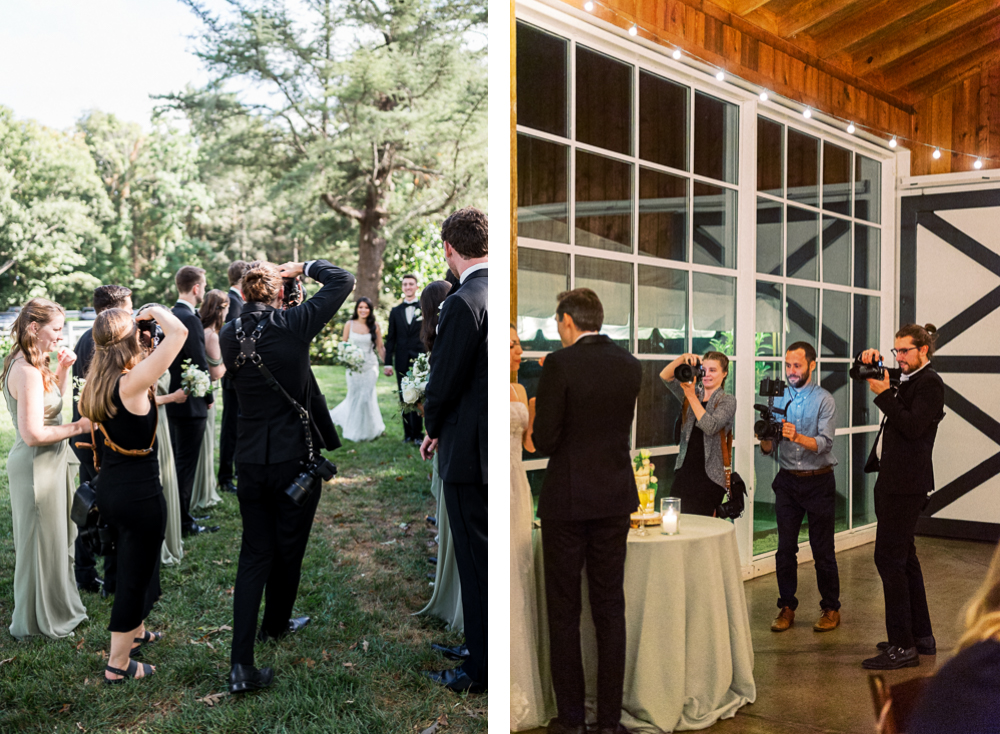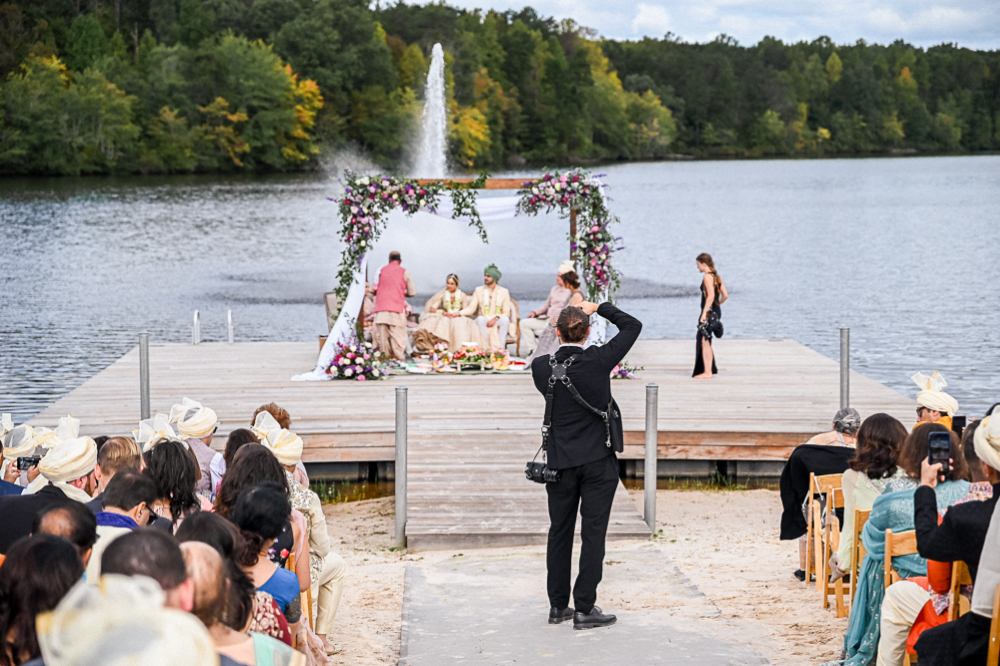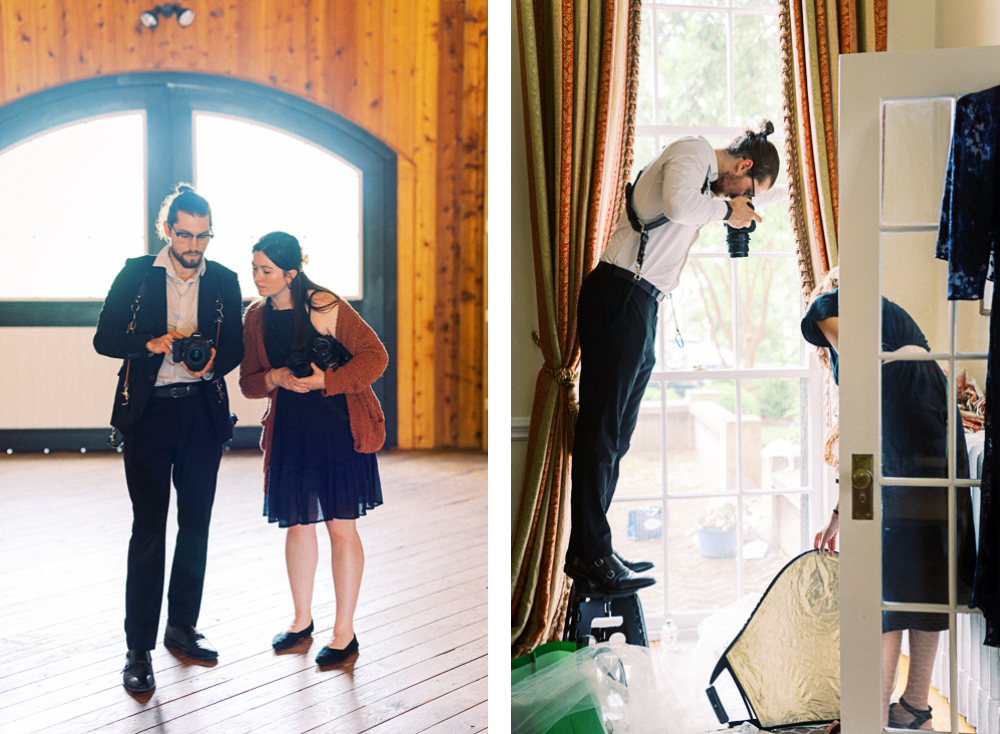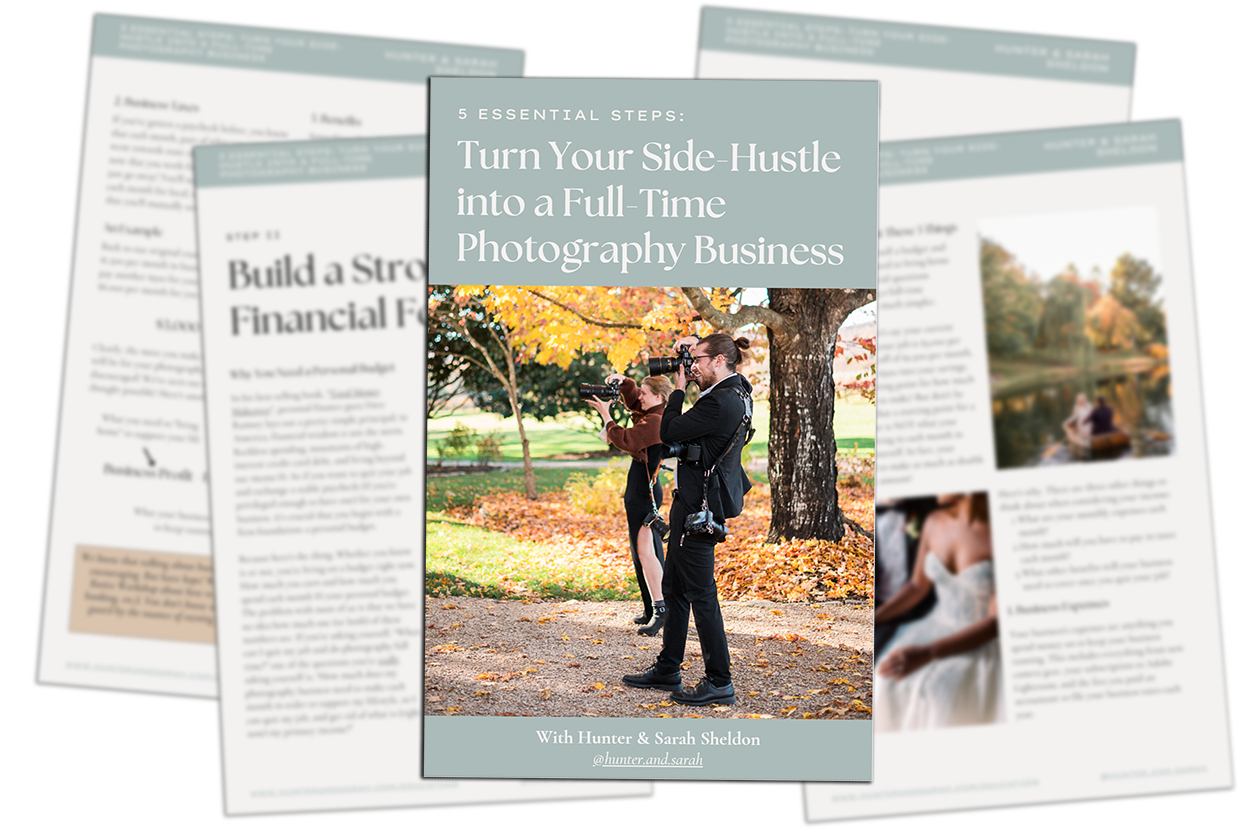VIEW BY CATEGORY:
Hi, we're Hunter and Sarah, a husband-and-wife, luxury wedding photography team. We’re also educators, helping other photographers build profitable and sustainable photography businesses.
MEET US
LOOKING FOR SOMETHING?

What is Second Shooting? (H&S’s Guide to Second Shooting Pt. 1)
October 26, 2023
Hey photographer friends! Welcome back to our Photography Blog, Mastering the Wedding Photography Biz with Hunter and Sarah! Today, we’re re-launching and reprising a blog series we wrote back in the winter of 2019. While a lot has changed in our business and in the photography industry since then, a lot has also stayed the same. Second shooting is still one of the best ways for a newer photographer to grow their business, so this entire blog series aims to answer these three questions: What is second shooting? Should I second shoot for my photography business? How do I become a good second shooter?
In this first segment, we’re going to introduce you to second shooting and assisting, in case you don’t know how it works or what it us. But we’re also going to try to convince you why — if you aren’t already — you should be out there doing it!

What is Second Shooting?
Second shooting is just what it sounds like: being the second photographer on a wedding day. Since the vast majority of wedding photographers aren’t husband-and-wife teams like we are, these solo-preneurs are almost always looking for a second set of eyes and hands (and lenses) on a wedding day. This serves as a necessary backup and a second angle, in order to help the lead photographer capture the day to the fullest. Especially when shooting a larger wedding, having a second or even third team member capturing the day can be a huge asset!
As we understand it, second shooting is different from assisting. An assistant is often someone who comes along on a wedding day to carry bags, help change lenses, roll film, or move lighting equipment. Generally, an assistant just helps with whatever the lead photographer wants. An assistant typically doesn’t take any photos the entire day.
Depending on their skill level, a second shooter could make anywhere from $40-$100 per hour of coverage. Second shooters are often contracted for most of or even all of the wedding day. On the other hand, since an assistant is a lower-skilled job, they often make closer to $15-$30 per hour, and may only be present during portrait time.

Why Should A New Photographer Second Shoot or Assist?
The first and most important reason to second shoot for a more experienced wedding photographer is to learn! If you’re totally new to wedding photography, there are so many aspects of a wedding day that are probably completely foreign to you. How do you run wedding party photos? When should you take photos of the rings and shoes? What’s it like to deal with family drama on a wedding day?
Even if your camera never even left your bag (as in the case of assisting), watching a professional photographer who’s further along in the wedding photography journey than you could be hugely insightful. Or even better, assist several different photographers, and take the components of each of their styles that align with your personality and skills the best!
The second reason to second shoot is to gain true hands-on experience. We’re are firm believers in the importance of learning-by-doing. Even the best book or online course can’t teach a concept or skill quite like getting out and doing it! If, as Malcolm Gladwell claims, it takes 10,000 hours to achieve mastery, put in those first 100 hours, 10 at a time, by second shooting!
The final reason why you should pursue second shooting when you’re first getting started is for your portfolio. How can you book your first wedding if potential wedding clients want to first see wedding photos as proof that you can shoot a wedding? Second shooting! As you assist lead photographers over a series of weddings, you’ll start to build a robust and varied wedding portfolio, so when it comes time to book your first wedding as the lead, you know that you’re ready to take the reins, and can prove it to your potential clients with photos.

Our Second Shooting Experience
Over the years, we’ve assisted other professional photographers in a second or third shooter capacity. Mostly with Eric Kelley, whom we apprenticed under for several years in the early days of our business. Because of this experienced, we had to learn “what is second shooting” from the perspective of a second shooter! We learned how to tune into the needs of our lead photographers. We’ve also learned to adapt to their workflows, and operate however they need us to!
Additionally, we also have third shooters/assistants on most of our own wedding days, thanks to our own Apprentice program. So we’ve also learned “what is second shooting” from the lead perspective. Pretty quickly, we figured out what’s most valuable to us when we’re in charge. We’ve learned how we want our third shooters to behave and operate when they’re a part of our team.
Because of these experiences, and through chatting with other photographer friends and students who have been on both sides of the second shooting relationship, we’re excited to relaunch this multi-part blog series, all about second shooting and assisting!

Want More?
Click HERE to get your free copy of our eBook: “5 Essential Tips for Turning your Side-Hustle into a Full-Time Photography Business.” You’ll also be subscribed to our newsletter, so our newest content, weekly encouragement, and exclusive offers will be delivered right to your inbox!

—
Check out the other segments in this blog series!
Filed in:
Wedding Photography & Photography Education
Charlottesville, Virginia and Beyond
HOME
ABOUT US
WEDDINGS
JOURNAL
FOR PHOTOGRAPHERS
PRESS & PRAISE
BLOG
CONTACT
e. hunter@hunterandsarahphotography.com
p. (434) 260-0902
